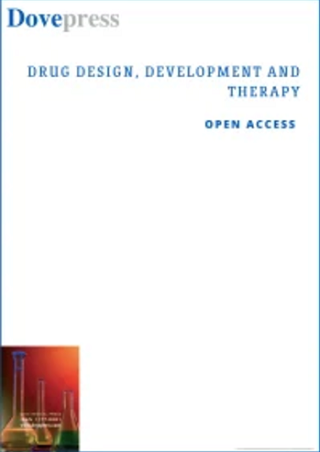Untargeted Lipidomics Analysis to Discover Lipid Profiles and Biomarkers of Rabbit Acne Model and Reveal Action Mechanism of Isotretinoin
IF 4.7
2区 医学
Q1 CHEMISTRY, MEDICINAL
引用次数: 0
Abstract
Background: Acne vulgaris (AV), a chronic inflammatory pilosebaceous disorder, affects 80– 90% of teenagers. This study aimed to discover lipid profiles and biomarkers of the rabbit ear acne model, and investigate the mechanism of isotretinoin in treating acne at the lipid level.Methods: Untargeted lipidomic analysis using ultra-high performance liquid chromatography system (UHPLC) coupled to q-extraction plus was performed to identify skin lipid metabolites in blank control (groups C), model group (group M) and isotretinoin group (group T). Multivariate statistical analysis was used to process the lipidomics data.
Results: A total of 43 lipid classes comprising 6989 lipid species were identified from the mass spectrometry data. The orthogonal partial least squares discriminant analysis (OPLS-DA) model demonstrated significant separation in skin lipidomic profiles between group M and group C. With variable influence on projection (VIP) > 1.0 and P-value < 0.05, 299 significantly different lipid metabolites were identified. These lipid metabolites consisted mainly of ceramides (Cer) (53.85%), phosphatidylethanolamines (PE) (9.03%), phosphatidylcholines (PC)(5.35%), and sphingomyelin (SM)(4.01%). Combining with AUC ≥ 0.9 as the elected criteria, Cer (d18;1_24:0), zymosterol (ZyE)(33:5), Cer (t43:1), ZyE (33:6), ZyE (24:7), and ZyE (35:6) have “high” accuracy. Isotretinoin treatment normalized 25 lipid metabolites in the acne model.
Conclusion: Our findings provide new insights into the role of lipid metabolism in the pathogenesis of acne and the action mechanism of isotretinoin.
通过非靶向脂质组学分析发现兔痤疮模型的脂质特征和生物标志物,揭示异维A酸的作用机制
背景介绍寻常性痤疮(AV)是一种慢性炎症性皮脂腺疾病,影响着80%-90%的青少年。本研究旨在发现兔耳痤疮模型的脂质特征和生物标志物,并从脂质水平研究异维A酸治疗痤疮的机制:方法:使用超高效液相色谱系统(UHPLC)结合q-萃取加法进行非靶向脂质体分析,鉴定空白对照组(C组)、模型组(M组)和异维A酸组(T组)的皮肤脂质代谢物。采用多元统计分析处理脂质组学数据:结果:从质谱数据中共鉴定出 43 类脂质,包括 6989 种脂质。正交偏最小二乘法判别分析(OPLS-DA)模型显示,M 组和 C 组的皮肤脂质组学特征有显著差异。这些脂质代谢物主要包括神经酰胺(Cer)(53.85%)、磷脂酰乙醇胺(PE)(9.03%)、磷脂酰胆碱(PC)(5.35%)和鞘磷脂(SM)(4.01%)。结合 AUC ≥ 0.9 作为当选标准,Cer (d18;1_24:0)、Zymosterol (ZyE)(33:5)、Cer (t43:1)、ZyE (33:6)、ZyE (24:7) 和 ZyE (35:6) 具有 "高 "准确度。异维A酸治疗可使痤疮模型中的25种脂质代谢物正常化:我们的研究结果为脂质代谢在痤疮发病机制中的作用以及异维A酸的作用机制提供了新的见解。
本文章由计算机程序翻译,如有差异,请以英文原文为准。
求助全文
约1分钟内获得全文
求助全文
来源期刊

Drug Design, Development and Therapy
CHEMISTRY, MEDICINAL-PHARMACOLOGY & PHARMACY
CiteScore
9.00
自引率
0.00%
发文量
382
审稿时长
>12 weeks
期刊介绍:
Drug Design, Development and Therapy is an international, peer-reviewed, open access journal that spans the spectrum of drug design, discovery and development through to clinical applications.
The journal is characterized by the rapid reporting of high-quality original research, reviews, expert opinions, commentary and clinical studies in all therapeutic areas.
Specific topics covered by the journal include:
Drug target identification and validation
Phenotypic screening and target deconvolution
Biochemical analyses of drug targets and their pathways
New methods or relevant applications in molecular/drug design and computer-aided drug discovery*
Design, synthesis, and biological evaluation of novel biologically active compounds (including diagnostics or chemical probes)
Structural or molecular biological studies elucidating molecular recognition processes
Fragment-based drug discovery
Pharmaceutical/red biotechnology
Isolation, structural characterization, (bio)synthesis, bioengineering and pharmacological evaluation of natural products**
Distribution, pharmacokinetics and metabolic transformations of drugs or biologically active compounds in drug development
Drug delivery and formulation (design and characterization of dosage forms, release mechanisms and in vivo testing)
Preclinical development studies
Translational animal models
Mechanisms of action and signalling pathways
Toxicology
Gene therapy, cell therapy and immunotherapy
Personalized medicine and pharmacogenomics
Clinical drug evaluation
Patient safety and sustained use of medicines.
 求助内容:
求助内容: 应助结果提醒方式:
应助结果提醒方式:


